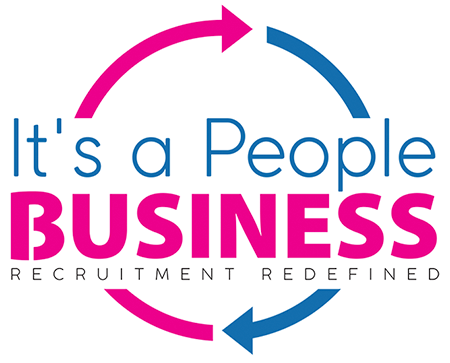
Performance issues in the workplace can be complex and challenging to address. As a manager, it is crucial to ensure that every member of your team is able to perform their duties to the best of their abilities. This not only helps to improve productivity and efficiency but also ensures that your team is able to deliver high-quality work that meets the expectations of your clients and customers. However, there may be times when you notice that some employees are not performing up to the mark, which can be a cause for concern.
Performance appraisals are an important part of any business, large or small. They provide a means of tracking progress over time and help identify areas where employees can improve. An effective performance appraisal should include feedback from management, peers, and employees themselves. This feedback should be tailored to the individual employee and should be focused on their specific job duties, tasks, and goals. It should also identify any areas of improvement, along with a detailed plan to address these areas. Regular performance appraisals should be conducted in order to ensure that employees are meeting their performance goals and to identify any areas of improvement.
Identify areas of improvement for employees
Identify areas of improvement for employees
In this blog post, we will be discussing the various performance-related issues that can arise in the workplace and how to address them effectively. From identifying the root cause of the problem to setting goals and providing constructive feedback, we will be sharing practical tips that can help you manage performance issues in your team. We will also be discussing the importance of regular performance appraisals and how they can be used to identify areas of improvement for employees. By the end of this article, you will have a better understanding of how to address performance issues in the workplace in a comprehensive and effective manner.
1. Identify the areas of performance that need improvement
1. Identify the areas of performance that need improvement
Addressing performance issues in the workplace can be a challenging task for managers and supervisors. The first step in tackling this issue is to identify the areas of performance that need improvement. This may involve reviewing individual job responsibilities, setting objectives and targets, and assessing key performance indicators. By conducting a thorough assessment of individual and team performance, managers can gather the necessary data to develop appropriate strategies for improvement.
Take a proactive and strategic approach
Take a proactive and strategic approach
It is important to approach this assessment in a factual and objective manner, using available data and verifiable evidence to identify areas of underperformance. By doing so, managers can establish a clear picture of the issues at hand and develop focused strategies designed to address specific performance concerns. Overall, addressing performance issues is a critical element of effective management and leadership, and by taking a proactive and strategic approach, managers can create a culture of accountability and continuous improvement within their organization.
2. Establish achievable goals with the employee
2. Establish achievable goals with the employee

Addressing performance issues in the workplace requires a proactive approach to achieving satisfactory outcomes for both the employee and the company. One effective strategy to address performance issues is to establish achievable goals with the employee. The goals should be specific, measurable, attainable, relevant, and time-bound (SMART), and designed to help the employee improve their work performance.
Continuous Feedback
Continuous Feedback
The supervisor or manager should set clear expectations and review the employee's progress regularly. It is important to provide the employee with the necessary resources, feedback, and support to help them achieve their goals. By defining expected outcomes and providing constructive feedback, the employee will have a clear understanding of what is expected of them and be motivated to meet the goals. Establishing achievable goals with the employee is a critical step in addressing performance issues in the workplace.
Read More: Mastering Talent Acquisition: Strategies and Best Practices for Recruiting Top Candidates
3. Provide necessary resources to support performance
3. Provide necessary resources to support performance

Addressing performance issues in the workplace requires a proactive approach. One essential component of this approach is to provide necessary resources to support performance. These resources may include time, training, equipment, and support services. By identifying and providing the specific resources needed, employees can better focus on their work and improve their productivity.
Have a collaborative approach
Have a collaborative approach
Supervisors and team leaders must demonstrate a willingness to work with employees to identify and resolve any performance barriers that may exist. This could require an investment in new technology or software, additional staff training, or access to experienced mentors or coaches. Regular check-ins should also be scheduled to provide an opportunity for employees to give feedback on the level of support they feel they are receiving. Overall, it is important to have a collaborative approach to ensure that performance issues are addressed in a way that benefits both the employee and the organization.
Read More: The Future of Work: Predictions for Online Recruitment in the Next Decade
4. Monitor progress and provide feedback
4. Monitor progress and provide feedback

Addressing performance issues in the workplace can be a challenging task for managers and supervisors. One effective strategy that can be used is to monitor progress and provide feedback to the employee. This involves setting clear objectives and goals for the employee, and regularly reviewing their performance against these targets. It is important to provide specific feedback on areas where improvement is needed, as well as acknowledging where the employee is excelling.
Make support available.
Make support available.
This approach helps to ensure that the employee stays focused and motivated, and can also help to identify any underlying issues that may be contributing to poor performance. In addition, this process can help to identify any training or development needs that the employee may have, which can further support their growth and development. Overall, monitoring progress and providing feedback is a key component of addressing performance issues in the workplace.
Read More: Mastering the Main Stages of Any Recruitment Discussion: A Practical Guide for Employers
5. Create a system of rewards or incentives to encourage improvement
5. Create a system of rewards or incentives to encourage improvement

Addressing performance issues in the workplace can be a challenge for managers and supervisors who are tasked with improving employee productivity and performance. While the reasons for poor performance can be varied and complex, one effective strategy for achieving improvement is to create a system of rewards or incentives that encourages employees to strive for better results.
A valuable tool for promoting long-term success
A valuable tool for promoting long-term success
By offering tangible rewards, such as bonuses or recognition programs, employees can be motivated to meet specific goals or benchmarks. Additionally, incentives that align with organizational goals can help individuals feel more invested in their work and more committed to achieving success. When implemented properly, a system of rewards and incentives can not only address performance issues but also serve as a valuable tool for promoting long-term success and growth within the organization.
Conclusion
Conclusion
Read More: The Benefits of Working with a Flat Fee Recruiter
In conclusion, addressing performance issues in the workplace can be a challenge, but it's an essential part of maintaining a productive and healthy work environment. By setting clear expectations, providing feedback and coaching, and offering support and training when needed, employers can help their employees perform at their best while also addressing any challenges that arise. Ultimately, it's about creating a culture of accountability and continuous improvement, where everyone has the skills, resources, and support they need to succeed.
Reach out to It's a People.Business for expert guidance and support in implementing these best practices. Our team of recruitment professionals can help you develop a cost-effective and efficient hiring strategy that aligns with your business goals. Contact us today to learn more and take the first step towards building a strong and talented team for your small business.
